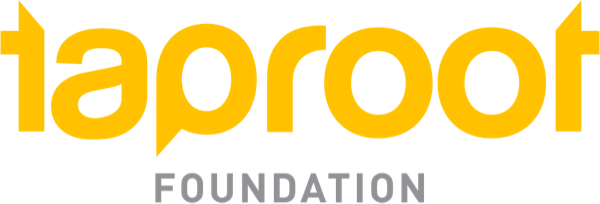To help you keep track of the big picture, we have compiled some of our best tips for managing a successful project. We encourage you to refer to these tips before and during your project.
Gather the right information up front
Your volunteer(s) will begin with immersing themselves in your organization and in any and all relevant resources. Avoid bottlenecks by gathering key materials upfront. For a hint on what may be relevant, consider our recommendations for what materials to gather by focus area:
Telling your Story: Marketing
- Organizational history, mission, and vision statements
- A style guide or branding guidelines
- Documentation of past branding shifts
- Copies of primary marketing materials or collateral
- Descriptions of key target audiences
- Documentation of messaging platforms
- Description of marketing goals
- Available budget for marketing activities
Managing your Money: Financial Management
- Financial statements (previous two years and current)
- Budget
- Financial management systems
- Documentation of finances/financial systems
- Overview of any external finance support
Defining your Vision: Strategic and Business Planning
- Current or former strategic or business plans (including those mandated from national offices if your organization is a chapter/affiliate of a national organization)
- Project acknowledgment and approval from the Board of Directors
- Identification of key stakeholders to include in the project process
- Relevant organizational background, highlighting strategic changes in direction
Building Systems for Impact: Technology
- Documentation of IT infrastructure
- Documentation of external and internal IT support and maintenance
- Available budget for IT improvements
- Login information for any key systems or software
Attracting, Retaining, and Developing your People: Human Resources
- Documentation of HR models, policies, and processes
- Handbook or other organizational policies
- Organizational structure chart/documentation
- Compensation/payroll policies
- Overview of any external HR support
Cultivating your Donors, Volunteers, and Clients: Stakeholder Engagement
- Organization budget and/or revenue goals
- Annual fundraising actuals
- Access to any existing CRM (Client Relationship Management) Database
- Fundraising or volunteer collateral
- Documentation of current donor and volunteer offerings and activity
Executing your Services: Operations
- Documentation or overview of key operational processes (internal or external)
- Identification of the key stakeholders for the operational process being examined
Refer back to your documented project “scope”
As the project progresses, it can be easy to drift into work that was not originally part of the agreed upon project, something we call “scope creep.” Volunteers want to help as much as they can and social change organizations have a big appetite for support. While well-intentioned, scope creep can cause projects to drag on or burn out volunteers without reaching a conclusion. Referring back to your documented requirements will recenter the project’s priorities and goals.
Stick to frequent touchpoints with your volunteer(s)
Frequent, regular touchpoints with your skilled volunteer will ensure the project remains on track and aligned with your vision. These touchpoints will also ensure your volunteers have a forum to request action items, feedback, and additional materials from you. We recommend dictating communication cadence and channels at the outset of your engagement.
Develop a timeline and meet your deadlines
Skilled volunteer projects run the risk of continuing indefinitely without a finite timeline and a commitment of dedicated time by the volunteer and your project manager, both of whom are likely juggling a full-time job on top of the project. Outline a timeline with your volunteer at the outset of the engagement and keep things on track by responding to emails and phone calls promptly and avoiding cancellations and missed deadlines.
Provide direct feedback
No matter how talented they are, skilled volunteers do not possess your deep understanding of your organization’s mission and vision. Your honest input on the work is crucial. When a volunteer asks you for your feedback, be honest and forthcoming – particularly if they’ve missed the mark.
Involve all relevant staff and stakeholders
Skilled volunteers typically address items related to your organization’s infrastructure and strategy, meaning many members of your team will be affected by their work. Your project manager is responsible for pulling in stakeholders and decision-makers, such as staff, leadership, and Board Members, at key inflection points in the project in order to ensure full organization buy-in.
Identify opportunities to “skill share”
A benefit of utilizing skilled volunteers over contractors is the opportunity to work alongside the volunteer in a way that facilitates the mutual exchange of expertise. Your volunteer may be able to train your Program Manager in a new technology while your Program Manager provides that volunteer with insights on constituent-centric design. We end with two stronger professionals who have a more robust toolbox of skills that they can use for social good. Recognize and articulate the unique value each partner is bringing and seize opportunities for professional development.
Foster a connection with your volunteer(s)
Skilled volunteers can turn into champions for your organization who remain involved far beyond the end of the project as continued volunteers, donors, advocates, or even future staff members! Cultivate a connection by demonstrating the impact their work will have on your mission, offering them different ways to get involved beyond their project work, and expressing sincere gratitude for their contributions.
Want more project management tips?
Check out the Taproot Foundation’s Designing for Impact Framework.
